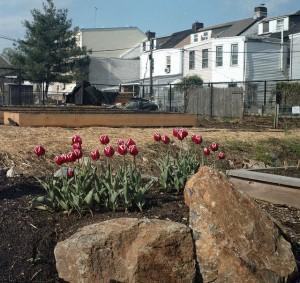 The benefits of urban agriculture are too many list. In its most basic form agriculture produces food, sustenance. But as a part of the urban fabric, agriculture in urban space brings food into the public realm, helps combat the food desert issue, and provides a space for education, all while allowing cities to promote sustainability. In other words, urban farming is a viable, productive use of land. At least in California it is, but not so much, at least according to Dan Gilbert, in Detroit. What California gets about urban agriculture that Gilbert doesn’t is cause for alarm.
The benefits of urban agriculture are too many list. In its most basic form agriculture produces food, sustenance. But as a part of the urban fabric, agriculture in urban space brings food into the public realm, helps combat the food desert issue, and provides a space for education, all while allowing cities to promote sustainability. In other words, urban farming is a viable, productive use of land. At least in California it is, but not so much, at least according to Dan Gilbert, in Detroit. What California gets about urban agriculture that Gilbert doesn’t is cause for alarm.
California’s Governor just signed into law a change to its the tax code that will facilitate urban farming. In Detroit, according to Dan Gilbert, the real estate mogul who has helped redevelop a large chunk of the city’s revitalized downtown, urban agriculture is anything but a productive activity. Gilbert dismissed the practice, saying it’s better to build up so Detroiters, “don’t have to worry about raising peas or corn or whatever it is you do in the farm.”
The new law in California allows municipalities to lower the assessed value, and thus the property taxes, on areas of land three acres or less, if owners agree to dedicate the land to growing food for at least five years. In these “urban agriculture incentive zones,” the property tax assessment is based on the agricultural value of the land rather than the market-rate value of the land, thus making the cultivation of privately owned, vacant land for agricultural use affordable and thereby possible. With this law, the potential of vacant land to provide food, education, excitement and promote sustainability is not only something that is legally sanctioned in California, but something that is further also celebrated as a worthwhile activity. In California, urban agriculture gets the coveted real estate distinction of being a “best use” of land.
And then there’s Detroit.
The situation in Detroit is obviously different– the city can’t sustain itself without a substantial increase in property tax revenues. This is a serious problem. Gilbert desires to raze abandoned homes in Detroit’s neighborhoods and replace the vacant land with residential and commercial buildings. According to his way thinking, urban agriculture is a stop gap measure, cute and fun, but not a real way to build a city. Steel and concrete– not soil– is what makes a city according to Gilbert. And Gilbert sits on the city’s demolition task force, which means his vision can become reality.
What’s so great about California’s new ordinance, beyond what it does for urban agriculture, is what it says about leadership and innovative thinking. California has a growing urban agriculture movement that is making a difference in communities. There’s no doubt that passing the ordinance wasn’t the easiest of endeavors, but advocates saw the value of urban agriculture and were able to show elected leaders the many benefits of providing open, vacant land for “raising peas or corn or whatever it is you do in the farm.”
Gilbert’s short-sighted understanding of what makes a city and the value of urban agriculture is frightening, especially because he has the power to follow through on his grandiose statements. Gilbert may have money, but he lacks vision and it’s vision that makes leaders unique.
Here’s to hoping that Gilbert’s never able to indiscriminately raze buildings and that he comes to understand the lesson California so eloquently just taught us: buildings are far from the only thing that make a city valuable.




